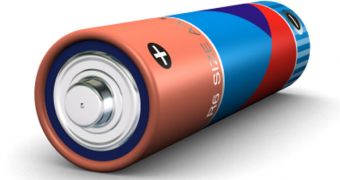Finding alternatives to traditional batteries in devices such as cell phones, laptops and even electric cars is one of the most important things for the industry, on account of the fact that innovation in this field could actually lead to a total re-shaping of our lifestyles. That is to say, power sources that can charge rapidly and discharge just the same, when they are needed to, could offer the solution to making, for example, electric cars have a much longer range than they do now.
New capacitor prototypes show promise in this field. Electrostatic ones, for example, use two layers of conducting material separated by an insulating one to store and release charges. And while this system allows them to do so very rapidly, the amount of current that can be handled at one point is fairly limited.
On the other hand, supercapacitors, which have an electrical, as well as a chemical component, can hold much higher amounts of electricity, but they perform only as best as the top batteries, as far as charge and discharge go.
The new prototype, designed by an international team of scientists from the University of Maryland (UM) and the Korea Advanced Institute of Science and Technology, promises to combine the best of the two types of capacitors, so as to produce a power source that charges and discharges as fast as the electrostatic ones, but one that can hold as much charge as supercapacitors.
UM chemist Gary Rubloff, who is heading the research, says that the new device his team has created is actually made up of some 10 billion capacitors, each of them some 50 nanometers across. All the tiny elements are interconnected, and this allows them to function as a single unit. The production process is very simple and very precise at the same time.
Basically, a sheet of aluminum is anodized, meaning a layer of oxide is added to its surface, and this creates a matrix of sorts, in which nanopores are placed at regular intervals from each other. In each of these so-called pores, three layers of material are added – two of titanium nitride (conducting material), separated by one of insulating aluminum oxide. This structure is exactly that of an electrostatic capacitor, while the entire ensemble acts as a supercapacitor.
Rubloff now plans to augment his technology, by creating deeper pores in the sheet of aluminum. This will allow the tea to insert thicker layers of titanium nitride and aluminum oxide inside, and thus increase the storage and charge capacity of the entire device. In the short-run the goal is to create a hybrid battery-capacitor propulsion system for electric vehicles.

 14 DAY TRIAL //
14 DAY TRIAL //